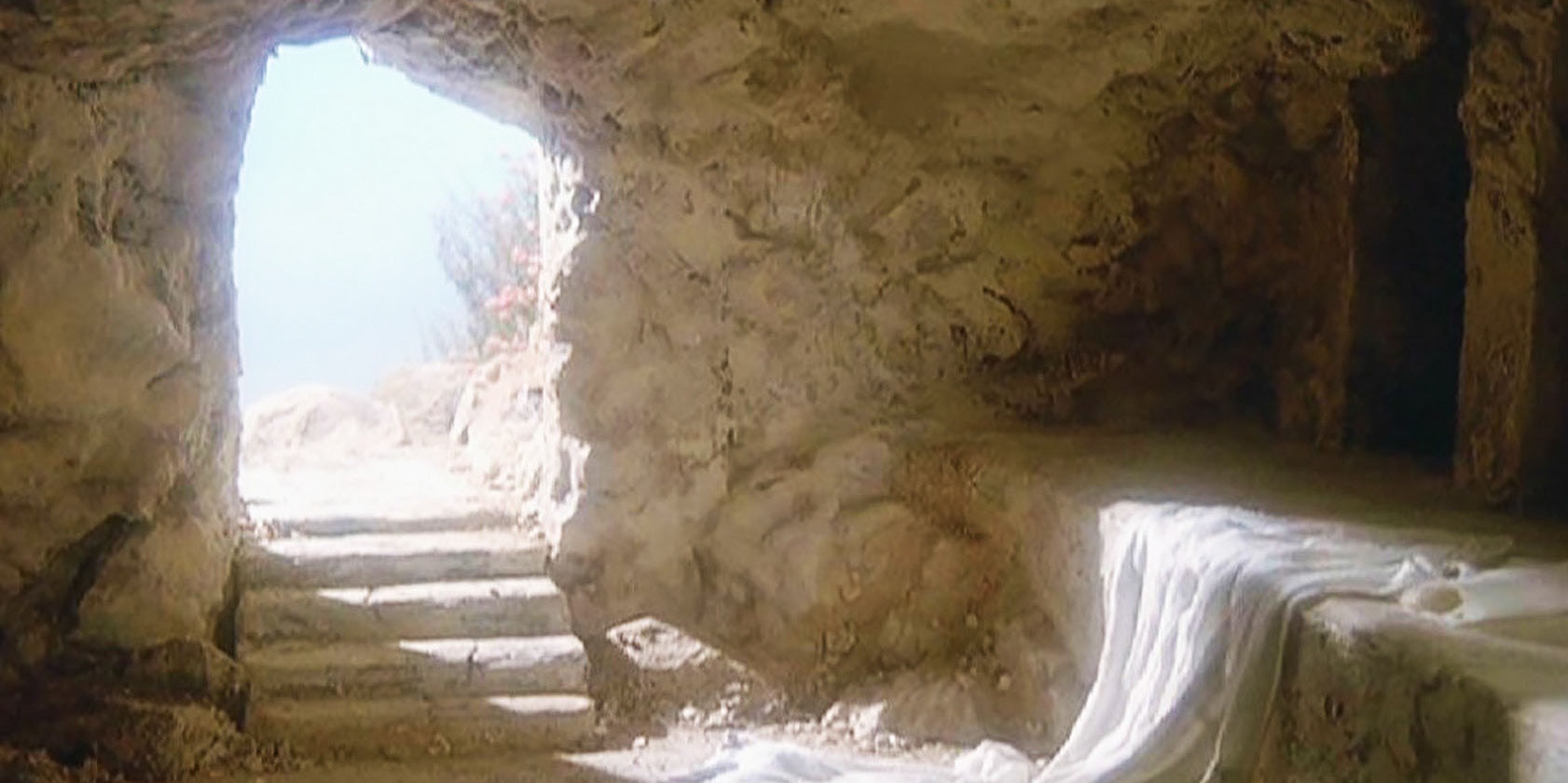I’ve talked to a lot of people who say they agree with, and appreciate, the teachings of Jesus. It’s popular in our day to resonate with His teachings but not His Church. Many people who are troubled by the exclusive claims of Christianity don’t realize that it was Jesus, Himself who said, “I am the way, and the truth, and the life. No one comes to the Father except through me.” John 14:6
He also said, “Anyone who has seen me has seen the Father” (John 14:9). He said, “I and the Father are one” (John 10:30). The Jewish writer of Hebrews said, “He is the radiance of God’s glory and the exact representation of His being” (Hebrews 1:3). John 1:14 say that “the Word, (God) became flesh (Jesus) and dwelt among us.” Jesus claimed to be God in the flesh.
As we approach the question of His divinity, we need to realize that at the center of Christ’s teaching, His mission, His Message, His life, was (and is) His identity. The central theme and focus of His teaching was not a set of principles or commands; it wasn’t love or grace – per se – it wasn’t feed the poor, be kind to one another, or be a good citizen. At the core of His teaching was His identity. Who He was. And to be one with Him is not to do what He says, as much as it is to believe in HIM, who He is and what He has done.
This is why His definitive question still echoes forth into our hearts today:
“But who do you say that I am?” Matthew 16:15
This is what separates Jesus from every religious leader ever known. His message was not, “Do this, don’t do that”, but “Believe that I am who I say I am.” Think about it: Jesus was ultimately crucified, not because He talked about love or serving others or caring for the poor. No, His enemies crucified Him because of who He claimed to be. He claimed to be the Messiah, “the Liberating King”. And it is His identity that continues to be at the center of discussion, debate, belief and unbelief, heaven or hell.
The importance of this question cannot be overstated. How might we tackle such a massive question? We must get to the heart of the matter. What do you think is the central event of the entire Christian faith? In all of history? The Resurrection is everything. If Jesus rose from the dead, then we have to accept all that He said; if He didn’t rise from the dead, then we don’t need to worry about anything that He said. The central issue is not whether or not you like His teaching, but whether or not He rose from the dead. If the resurrection took place then He is exactly who He claimed to be. If He didn’t, everything is futile, we are still in our sins, and we need to pack it up, go home, and wait for death to come. This precisely the point that Paul makes: 1 Corinthians 15:1-11
This appears to be the earliest statement of belief, a kind of creedal proclamation, doctrinal statement. In fact, we see elements of the Apostles Creed (widely accepted by the 4th Century), but this was written as early as 35-49 A.D. So we are looking at a statement of belief from within a few years after the Resurrection. Read it now.
Is Jesus Really God? – Let’s corroborate Paul’s outline with historic documentation.
1. Christ died. (v. 3)
If you’re thinking it seems to be circular reasoning to seek evidence for the life, crucifixion, burial, and resurrection of Christ by using the Bible, then let me give you sources outside of the Bible: Tacitus, a 1st Century historian, writing about Nero’s blaming Christians for the great fire in Rome wrote:
“Consequently, to get rid of the report, Nero fastened the guilt and inflicted the most exquisite tortures on a class hated for their abominations, called Christians by the populace. Christus, from whom the name had its origin, suffered the extreme penalty during the reign of Tiberius at the hands of one of our procurators, Pontius Pilatus, and a most mischievous superstition, thus checked for the moment, again broke out not only in Judea, the first source of the evil, but even in Rome.”
These statements don’t prove that He was God, but they do prove that Christ lived (and when He lived), and that He died, through the “extreme penalty” (crucifixion), under Pilate. Celsus, a 2nd Century opponent to early Christianity, wrote the earliest known comprehensive attack on Christianity. He wrote:
“Jesus accordingly exhibited after His death only the appearance of wounds received on the cross, and was not in reality so wounded as He is described to have been.” He says, after His “death”, He appeared with wounds.”
Liberal scholar, John Dominic Crossan (a part of the infamous, Jesus Seminar), concluded Christ’s death is indisputable, saying, “That He was crucified, is as sure as anything historical can be.”
2. Christ was buried. (v. 4)
In 1st Century Judaism, after a man died, someone had to claim the body and bury it before sundown. All four Gospels state that Joseph of Arimathea, a rich, dissenting member of the Sanhedrin, offered his tomb for Jesus’ body. Not one of disciples showed up to take, and care for, His body. This is what some scholars have noted, is a story of “embarrassment”, to the early followers. Not one of His followers believed Him enough to have the guts to go get His body. They all ran. They completely failed their Master, not a way to start a movement.
3. Christ was raised from the dead. (v. 4)
The fact there was an empty tomb is undeniable. The theories started immediately. Some said, “the disciples stole His body.” This theory claims that they were on the run, hiding out scared, and suddenly became grave robbers, overpowering soldiers guarding the tomb. The “swoon theory” claims that Jesus didn’t die but instead, passed out, and the cool of the tomb brought Him back to life. Professional executioners knew when a victim was dead. They did not bury Jesus alive. Another theory is that the women went to the wrong tomb. Then, of course, everyone went to the wrong tomb. Why did no one go to the “right tomb” and produce the body? Another source of “embarrassment” for the early disciples would have been that the first eyewitnesses of the resurrection were women. Women were not even allowed to be witnesses in court. No one would try to make up or devise a story that included women as the key eyewitnesses to the most important aspect of the story, unless it actually happened. You don’t have theories on an empty tomb unless there’s an empty tomb. There was an empty tomb.
- He appeared to over 500 people. (vv. 5-9)
Paul points out that He appeared to different people, at different times, in various ways. One person here, a few people there, small groups, large groups, and to 500 at once. He’s pointing out these were not hallucinations. Paul says, some who saw Him, “are still alive”. Archaeology proves that the four biographies of Christ were written within the lifetime of Christ’s contemporaries. Most scholars agree that by 70-80 A.D. the Gospels were written. There were people who knew Jesus personally. They saw Him risen. Others could have refuted the claims about Him. So, within 50 years, would be the same as if people claimed J.F.K. was the Messiah or that, after his assassination, he rose form the dead. What would happen? Those who knew Him would refute it. Not unlike Lloyd Benson’s famous quip to Dan Quayle in the 1988 Vice Presidential debate; he could’ve said, “I knew Jack Kennedy. And he was not God, nor did he claim to be.”
- The disciples believed, preached, and died martyr’s death. (vv. 10-11)
All of the disciples, minus Judas, who hung himself previously, and John, who died in exile, died martyr’s deaths. For many, this is the ultimate proof. No one would die, knowing they were dying for a lie.
You cannot explain the birth of the Church apart form the resurrection. In the written testimony of Pliny the Younger (carrying out the persecution of early Christians for Trajan), he states that the early Christians “gathered on a stated day before dawn and sang hymns to Christ as to a god.”
Here’s what we know (apart from the Bible): Jesus lived (and when He lived), He was crucified, He was buried, an empty tomb was commonly accepted and not disputed even by the enemies of Jesus, and His early followers claimed to have seen Him alive again, and from the very beginning, worshipped Jesus as God. All of this points to the central event of history: the Resurrection. N. T. Wright makes this important historical observation: There was no thread of resurrection in Jewish theology or in Greek philosophy. There was no formation of resurrection theology over time. It appeared fully developed over night.
Here I have not proven that Jesus rose from the dead. But I have forced the skeptic to give an answer for the facts. But at the end of the day you can only receive this truth by faith. Immediately, many are frustrated, wondering, “Why faith!? I have such a hard time with faith! I can’t just believe.”
“For by grace you have been saved through faith. And this is not your own doing; it is the gift of God, not a result of works, so that no one may boast.” Ephesians 2:8-9
Think about it: aren’t you grateful it’s faith. You don’t have to be good enough. You don’t have to be religious enough (because you can’t be). You don’t have to be smart enough. You can’t be. God is beyond your goodness and your comprehension. Praise Him for faith. Stop trying; stop working. Get off the treadmill of religion and believe.
Perhaps I’ve helped break some barriers that you have to have. But you must realize that belief precedes knowledge in spiritual matters. Faith always precedes reason as we approach a God who is bigger and more glorious than our minds can fathom. Eternity weighs in the balance. You must answer the question:
“But who do you say that I am?” – Jesus



